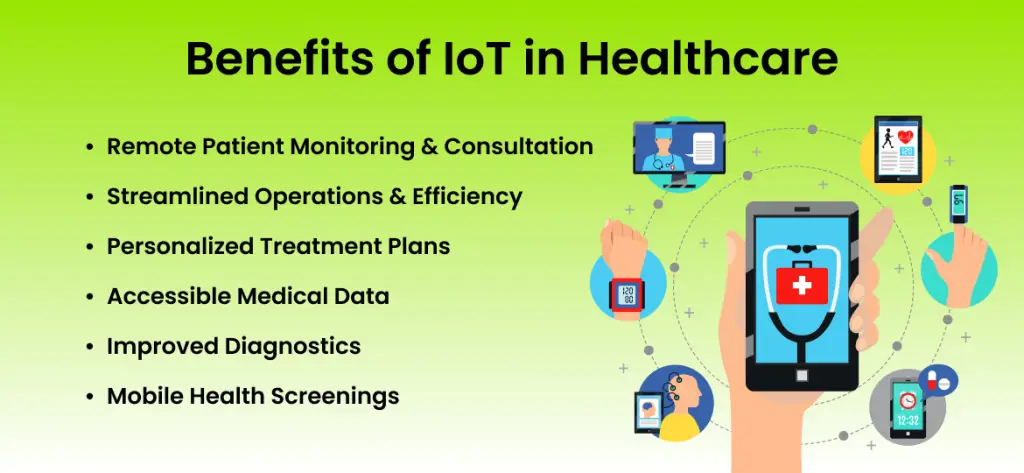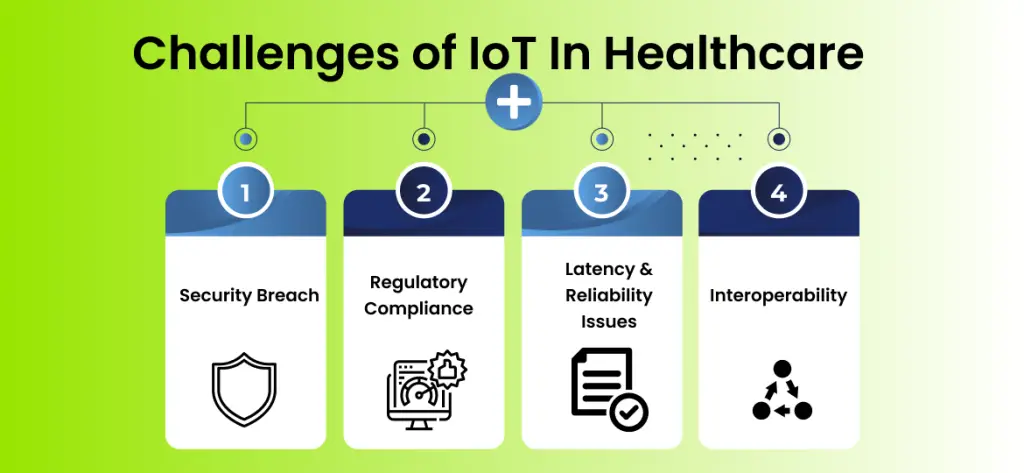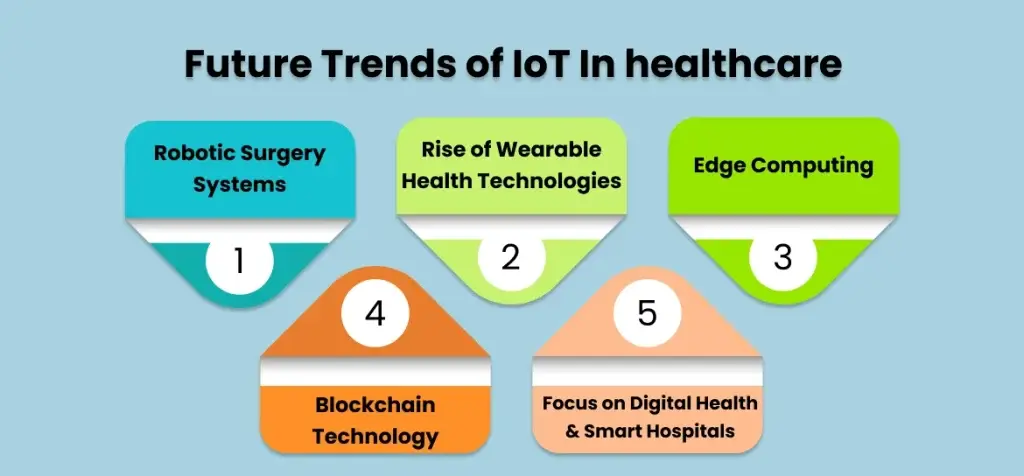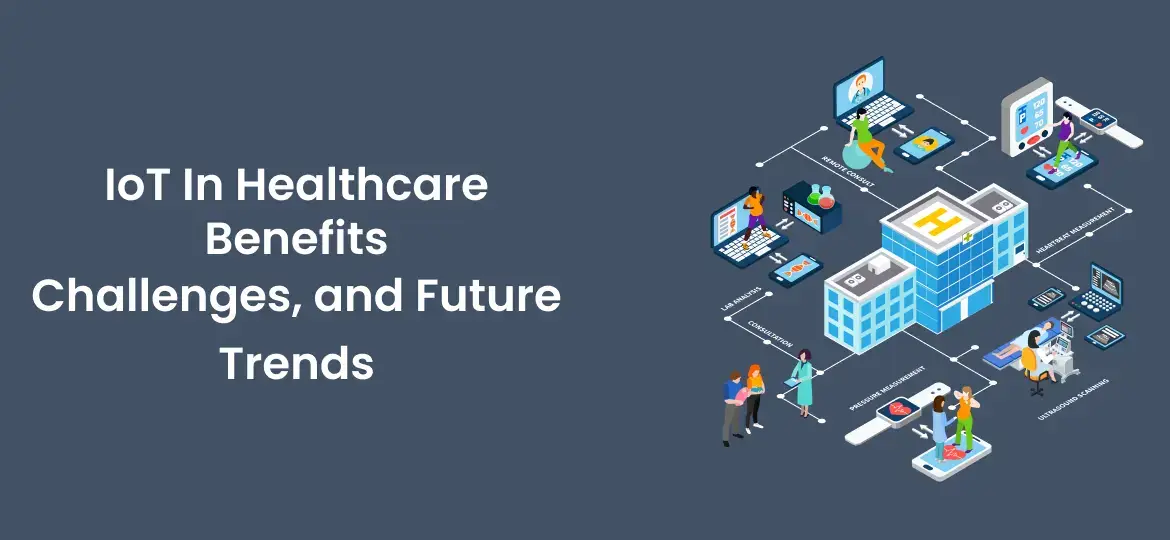The Internet of Things (IoT) is becoming an increasingly important aspect of several industries. The healthcare industry is no exception, and its impact on the vertical is multiplying with passing time. It helps optimize workflows for healthcare providers and doctors through medical IoT devices.
While IoT in the healthcare industry often brings to mind smart sensors and, ultimately, smart hospitals, the possibilities go far beyond these. IoT enables healthcare organizations to offer personalized, accessible & precise services. Various healthcare segments, from hospitals and clinics to elderly care and home health services, are leveraging the Internet of Medical Things (IoMT) to improve patient outcomes and operational efficiency. From remote health monitoring to transmitting real-time alerts, IoT applications in healthcare are transforming the way care is delivered.
There have been numerous technologies going around that have created a buzz in the healthcare industry. As we have technologies such as Artificial Intelligence, Machine Learning, and Augmented Reality. Hence, you see their applications in every sphere or sector, albeit some of those are just overhyped or mere gimmicks.
But the Internet of Things (IoT) is the most flourishing technology, and IoT in healthcare has brought in myriad applications that are more than just gimmicks and are quite useful in reality.
In addition, there is a huge demand for IoT developers apart from just the healthcare sector. Businesses across various industries, including healthcare and Industrial IoT Solutions, are pouring in investments in IoT app development. Let’s have a look at the progress of IoT in the healthcare industry.
Advantages of IoT in Healthcare

Remote Patient Monitoring & Consultation
The Internet of Things (IoT) has revolutionized healthcare by enabling remote patient monitoring and consultation. Wearable devices and connected sensors continuously collect vital health data, such as heart rate, blood pressure, and activity levels, and transmit it to healthcare providers in real-time. This allows doctors to monitor patients’ conditions remotely, identify potential health issues early on, and provide timely interventions. Remote consultations through video conferencing and secure messaging platforms further enhance patient care, especially for those in remote areas or with mobility limitations.
Streamlined Operations & Efficiency
IoT technology has significantly streamlined healthcare operations and improved efficiency. Connected devices automate various tasks, such as medication dispensing, inventory management, and patient record updates, reducing manual errors and freeing up healthcare professionals’ time. Real-time data sharing and analytics enable better resource allocation, optimize workflows, and improve overall operational efficiency. This leads to cost savings, reduced wait times, and improved patient satisfaction.
Personalized Treatment Plans
IoT-enabled devices generate vast amounts of patient data, including medical history, lifestyle habits, and real-time health metrics. This data is analyzed to create personalized treatment plans tailored to individual patient needs. Doctors can use this information to make informed decisions about medication dosages, therapy options, and lifestyle recommendations. Personalized treatment plans lead to better patient outcomes, improved adherence to treatment protocols, and reduced risk of complications.
Accessible Medical Data
IoT technology has made medical data more accessible and readily available to both patients and healthcare providers. Cloud-based platforms securely store and manage patient data, allowing authorized individuals to access it from anywhere, anytime. This facilitates seamless information sharing among healthcare professionals, improves care coordination, and empowers patients to take an active role in their health management. Accessible medical data also supports research and development, leading to advancements in healthcare.
Improved Diagnostics
IoT-enabled devices and advanced analytics have significantly improved the accuracy and speed of medical diagnostics. Wearable sensors can detect subtle changes in vital signs or identify early symptoms of diseases, enabling timely interventions. Connected medical devices, such as imaging equipment and lab analyzers, provide real-time data and facilitate remote diagnostics. Improved diagnostics lead to earlier disease detection, more effective treatment, and better patient outcomes.
Mobile Health Screenings
IoT technology has made mobile health screenings more accessible and convenient. Portable and wearable devices can be used to conduct basic health screenings in various settings, such as homes, workplaces, and community centers. This expands access to healthcare services, especially for those in remote or underserved areas. Mobile health screenings can help identify potential health risks early on, promote preventive care, and improve overall population health.
Challenges of IoT in Healthcare

The Internet of Things (IoT) has the potential to revolutionize healthcare, offering improved patient care, reduced costs, and greater efficiency. From wearable health trackers to smart hospital beds, connected devices are becoming increasingly prevalent in the medical field. However, this interconnectedness also presents significant challenges that must be addressed to ensure the safe and effective implementation of IoT in healthcare. Let’s explore some of the key hurdles:
Security Breach
One of the most pressing challenges is the risk of security breaches. IoT devices collect and transmit sensitive patient data, making them a prime target for cyberattacks. A security breach can have devastating consequences, including:
- Data theft: Personal health information (PHI), including medical records, diagnoses, and treatment plans, could be stolen and used for malicious purposes like identity theft or extortion.
- Device manipulation: Hackers could gain control of medical devices, potentially altering settings or even causing them to malfunction, putting patient safety at risk. Imagine a compromised insulin pump or a hacked pacemaker – the implications are terrifying.
- System disruption: A widespread attack could cripple entire healthcare systems, disrupting critical services and jeopardizing patient care.
Regulatory Compliance
The healthcare industry is subject to stringent regulations, such as HIPAA in the United States and GDPR in Europe, designed to protect patient privacy and data security. IoT devices and the data they generate must comply with these regulations. This can be a complex and challenging task, as regulations vary across jurisdictions and are constantly evolving. Key compliance challenges include:
- Data privacy: Ensuring that patient data is collected, stored, and transmitted securely and in compliance with privacy regulations.
- Data integrity: Maintaining the accuracy and reliability of data collected by IoT devices.
- Audit trails: Maintaining comprehensive records of data access and modifications.
Latency & Reliability Issues
Many healthcare applications, such as remote patient monitoring and emergency response systems, require real-time data and reliable connectivity. Latency, the delay in data transmission, and unreliable network connections can have serious consequences in these situations. For example:
- Delayed alerts: A delay in transmitting critical vital signs could prevent timely intervention in a medical emergency.
- Interrupted treatments: Unreliable connectivity could disrupt the delivery of essential treatments, such as remote drug infusions.
- Inaccurate data: Latency and network issues can lead to inaccurate data, which can compromise the quality of care.
Interoperability
IoT devices in healthcare often come from different manufacturers and use different communication protocols. This lack of interoperability can hinder seamless data exchange and integration, limiting the full potential of IoT in healthcare. Challenges related to interoperability include:
- Data silos: Data collected by different devices may be stored in separate silos, making it difficult to get a holistic view of the patient’s health.
- Integration complexities: Integrating data from multiple sources can be technically challenging and time-consuming.
- Standardization gaps: The lack of standardized protocols for data exchange and device communication further complicates interoperability.
Factors Affecting Website Maintenance Cost

The Internet of Things (IoT) is rapidly transforming various industries, and healthcare is no exception. From remote patient monitoring to advanced surgical systems, connected devices are revolutionizing how healthcare is delivered and experienced. This article explores the expanding scope of IoT in healthcare and delves into some of the key future trends shaping this dynamic field.
Robotic Surgery Systems
Robotic surgery systems, powered by IoT and advanced robotics, are becoming increasingly sophisticated. These systems offer surgeons enhanced precision, dexterity, and control, leading to minimally invasive procedures, faster recovery times, and improved patient outcomes. Future advancements will likely include greater autonomy for surgical robots, improved haptic feedback, and integration with AI for real-time decision-making.
Rise of Wearable Health Technologies
Smartwatches, fitness trackers, and other wearable sensors are becoming ubiquitous. These devices collect a wealth of physiological data, including heart rate, sleep patterns, and activity levels. This data can be used to personalize health recommendations, track progress towards fitness goals, and even detect early signs of illness. Future trends include more advanced sensors capable of monitoring a wider range of health metrics, integration with telehealth platforms, and the use of AI to analyze wearable data for actionable insights.
Edge Computing
Edge computing, which processes data closer to the source where it is generated, is becoming increasingly important in healthcare IoT. By processing data at the edge of the network, latency is reduced, enabling real-time decision-making in critical applications like remote surgery and emergency care. Edge computing also enhances data privacy and security by minimizing the amount of sensitive data transmitted to the cloud.
Blockchain Technology
Blockchain technology offers a secure and transparent way to manage and share healthcare data. It can be used to create an immutable record of patient medical history, track medication provenance, and manage clinical trial data. Blockchain can also empower patients to have greater control over their health data and share it securely with authorized parties.
Focus on Digital Health & Smart Hospitals
The convergence of IoT, AI, and other digital technologies is driving the development of comprehensive digital health solutions. Smart hospitals, equipped with connected devices and intelligent systems, are becoming more efficient, patient-centric, and data-driven. Future trends include the use of AI-powered chatbots for patient engagement, virtual reality for pain management, and predictive analytics for optimizing hospital operations.
Conclusion
In conclusion, the Internet of Things holds immense transformative potential for the healthcare industry, promising to revolutionize patient care, enhance efficiency, and drive innovation. We’ve explored the key benefits, from improved patient outcomes through remote monitoring and personalized medicine to increased efficiency and cost reduction through streamlined operations and optimized resource allocation.
However, realizing this potential requires addressing significant challenges, including security and privacy concerns, interoperability issues, connectivity and reliability hurdles, and the complexities of data management and analysis. Looking to the future, trends like AI and machine learning, edge computing, blockchain technology, advancements in wearable technology, and the expansion of telehealth and remote care offer exciting possibilities for further advancements.
The future of healthcare is connected, and by working together, we can ensure that this connectivity translates into a healthier future for all. Ready to explore how IoT can transform your healthcare organization? Contact Echoinnovate IT today to discuss your specific needs and discover how our expertise can help you navigate the complexities of IoT implementation and achieve your healthcare goals.
FAQs: Exploring IoT in Healthcare: Benefits, Challenges, and Future Trends
What are the key benefits of IoT in healthcare?
IoT in healthcare improves real-time patient monitoring, reduces hospital visits, enhances operational efficiency, and ensures better data-driven decision-making for doctors and healthcare providers.
What are the main challenges of implementing IoT in healthcare?
The biggest challenges include data security risks, high implementation costs, interoperability issues, and the need for strong regulatory compliance to protect patient data.
How is IoT shaping the future of healthcare?
IoT is leading to AI-powered predictive analytics, remote robotic surgeries, wearable health tech advancements, and smart hospital management systems for improved patient care.



